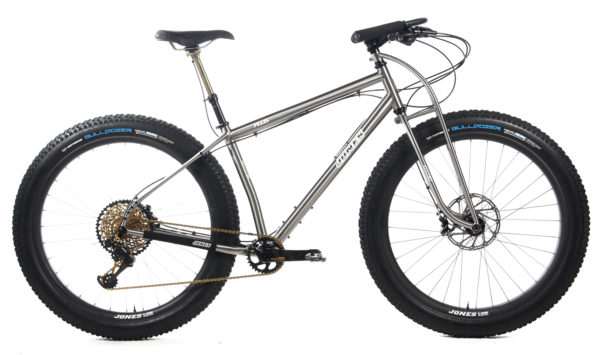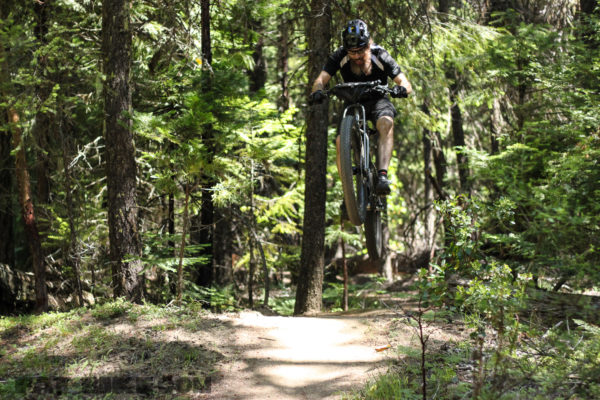Podcast: Play in new window | Download
Subscribe: Apple Podcasts | RSS
Jones bikes are unconventional to say the least but amazingly versatile and well thought out bikes. After you listen to our interview, if you are interested in checking more, the first stop is the Jones website and specifically Jeff’s blog where he gets into a lot of detail about the different products and design philosophies.
He has also produced some excellent videos about some of the products discussed on this podcast:




I enjoyed this Fat Camp and it made me interested in the Jones Plus bike. So, I watched all the videos and checked out the Jones website and even read some reviews on this bike. Most of the unique bike geometry features like long chainstays, 76mm offset fork, long wheelbase, slack seat tube and head tube, short cockpit, upright riding position and 45 degree, multi-position handlebar made good logical sense to me. However, I can’t figure out why the Truss fork would be an improvement over a regular rigid fork with a 76mm offset? While I find the look and uniqueness of the Truss fork appealing, I can’t come up with a good engineering reason why the extra complication and expense of the Truss fork makes it any better than a regular rigid fork.
I was thinking the same thing…maybe this explanation ended up on the cutting room floor. My guess was that with the extended rake this gives the fork more rigidity without using oversized tubing (it’s kind of a parallelogram shaped structure).
But I did really like his overall philosophy and maybe his frames would be a good fit for me and my style of riding. Although I might need a bit of convincing on that H-bar.
Stiffer under braking, Jeff mentions this in one of his videos
Elsewhere Jeff has also said the truss is the lightest way to make a rigid fork that stiff
I had just walked out of a conference call, listening to a structural engineer explain why we could not install a caisson with an off set pier cap to incorporate a previously unknown existing caisson because he would have to re-calculate the…. Yawn, when I jump in the van for my ride home and see that KBS had posted up this interview. AWESOMENESS!!! I love the bike geek talk far more than dealing with structural loads. Yes, I just said loads.
I would actually love to hear the parts of the interview where Jeff goes off into “the weeds”. Great job as usual KBS!
The fork is light and rigid, I’ve got an IceCream trucker with the standard fork, you can see it flex/twist compared to either of my Jones with truss forks.
In regards as to why bikes have/can tolerate larger wheel to rim width ratios has to do with the way the plys are oriented in the different types of tires. Bias ply tires (bike tires) spread the pressure along the sidewall causing the tire to sort of stand up more and create a more laterally stiff tire. Radial ply tires create a less laterally stiff tire therefore needing a wider rim to support the side loads and to prevent squirm. I’m pretty sure I heard this fact on one of your earlier podcasts. I’m not arguing that wider rims aren’t better, though I have found rock protection to be an issue.